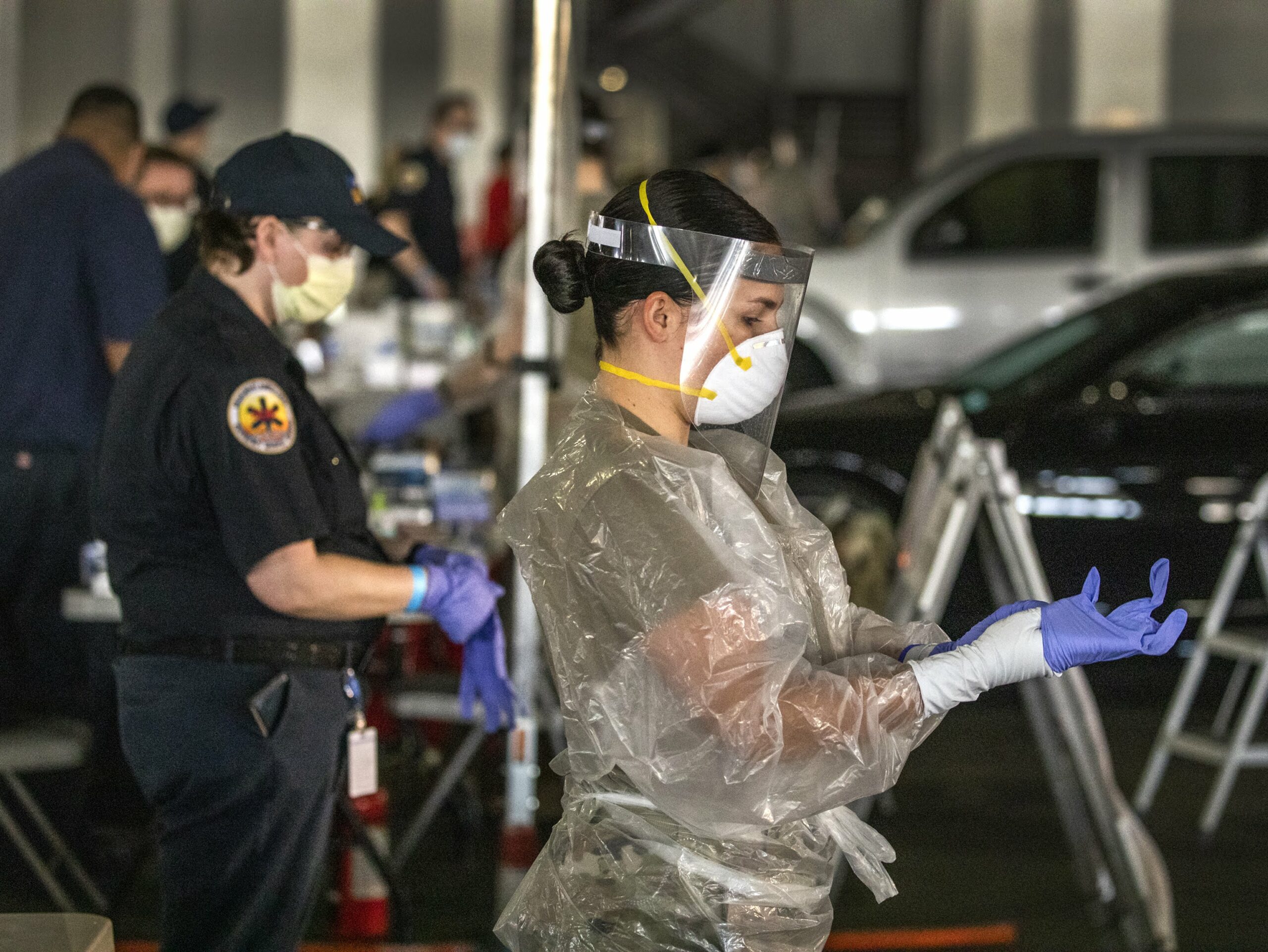As COVID-19 prevalence rises among Latinos in Southern Nevada, officials work to bring testing to consulates, churches

Health officials in Southern Nevada say they’re concerned by the high rate of COVID-19 infections in the Latino community — a trend they believe is driven by factors including a greater propensity among Hispanics to live in multigenerational households and to hold public-facing jobs that can’t be done remotely.
The latest figures released by the Southern Nevada Health District show that 27 percent of people who have been hospitalized for COVID-19 — 373 people — are Hispanic, while the county at large is 31 percent Latino. By contrast, patients who are white account for 33 percent of hospitalizations (456 people), but 42 percent of the county’s population.
“We spend a lot of time together, and we’re very affectionate with each other and very close in our interactions,” Dr. Luis Medina-Garcia said in a bilingual press conference on Wednesday. “And this complicates the transmission of the virus.”
Health officials also said people living in large, multi-generational households — sometimes out of financial necessity — offers more opportunities to pass along the disease, especially to people more vulnerable because of their age. Nearly eight out of 10 deaths in Clark County are among people 65 or older.
Medina-Garcia also said lack of access to health care can worsen the effect of coronavirus, especially if it prompts someone to postpone medical care until their condition deteriorates. But the health authority said it didn’t have data handy about what subgroups within Clark County’s Hispanic population have been most acutely affected.
“I can’t tell you how many Hispanics recuperated quickly or not, because we don’t have that data available and in many cases it’s protected by privacy laws,” he said in Spanish. “But in general, the response has been good. Yes, there have been deaths, but compared to other states, I think Nevada has had a very favorable caseload.”
Elected leaders, including Clark County Commissioner Tick Segerblom, urged people to get tested and emphasized that testing is not only free and doesn’t require insurance, but also that those administering the test will not inquire about a person’s immigration status.
Dr. Fermin Leguen, chief of the health district, said in the Spanish portion of the press conference that officials noticed about a month ago that the number of reported cases among Latinos was low.
“This spurred, among other things, the county and the health district to begin implementing initiatives trying to bring tests closer to the Hispanic community,” he said. “Upon increasing the number of tests to the community, the possibility of diagnosing this illness grows.”
To that end, the health district is scheduled to have temporary testing sites in the coming weeks at the Mexican consulate, the Salvadoran consulate and the Centro Cristiano El Shaddai church in Las Vegas.
Leguen said he was unable to say whether there’s evidence people have avoided getting tested because of their immigration status. The health authority does not ask people about their status, and avoids saying things that give the perception that they collect the information.
Apart from the health front, Latinos have reported more economic hurdles from the pandemic than the population at large. In a late March survey, Pew Research found that 49 percent of Hispanics reported that they or someone in their household had taken a pay cut or lost a job, while 33 percent of the population overall reported those impacts.

